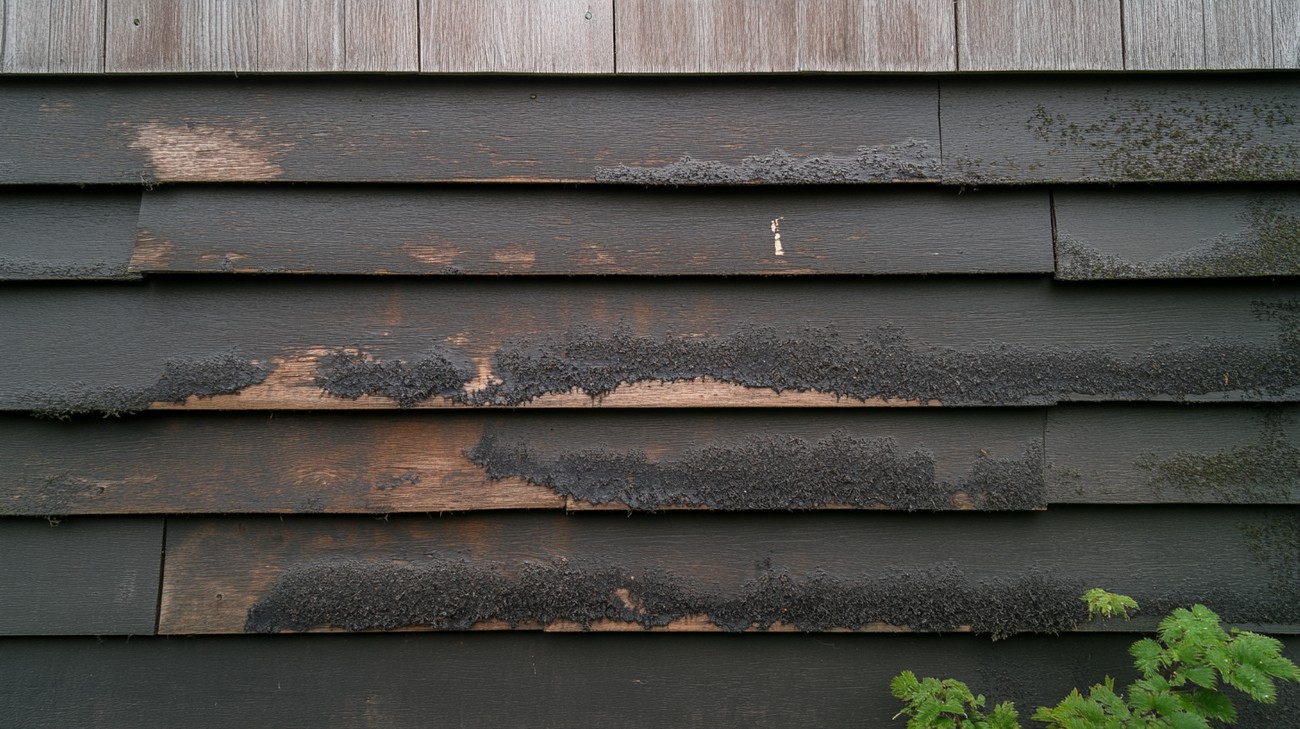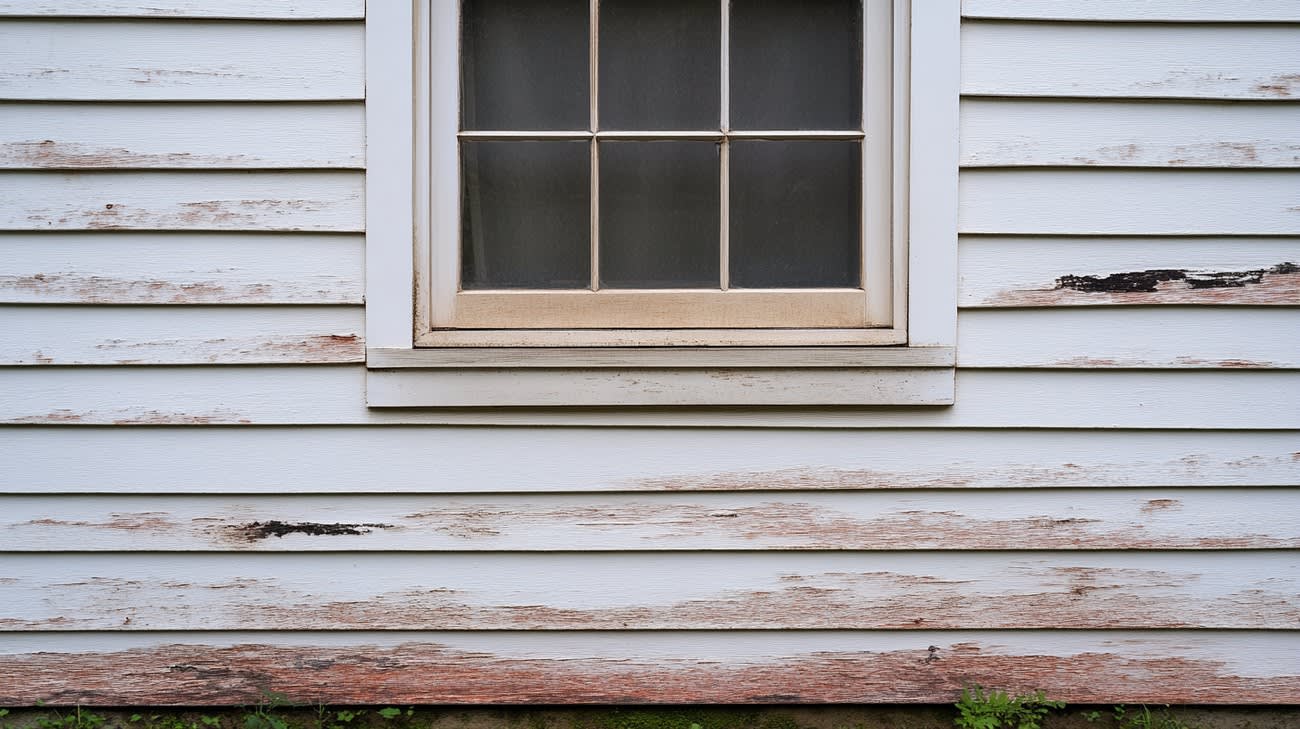Mold on siding is an often undervalued but serious concern related to home exteriors. Unchecked mold growth on the siding can cause material degradation and can significantly diminish the aesthetic appeal of your home. This blog will walk you through the necessity of taking immediate action when you spot mold on your siding, how it impacts your house's exterior, prevention tips, and efficient cleaning methods to ensure your home always looks its best.
The Emergence of Mold on Siding
Mold can develop on virtually any surface that offers a hospitable environment. This includes your home's siding, where mold finds the combination of organic materials, moisture and a lack of sunlight irresistible. Depending upon the material and climatic conditions, the degree of mold growth can vary.
- Wooden Siding: Possesses high susceptibility to mold growth due to its organic nature.
- Vinyl Siding: Resistant to mold growth, but not invulnerable.
- Best Sacramento Fiber Cement Siding: Highly resistant to mold but can still support mold growth if conditions are favorable.
The Impact of Mold on Siding
The mere sight of mold can transform your beautifully constructed house into a less appealing one. But aesthetics and resale value are not the only casualties here. Let's understand the depth of the problem mold presents:
- Damage to Siding Material: Mold secretes enzymes to decompose organic material for consumption. In the process, it can damage the structure of your siding material, leading to replacements more frequently.
- Health Risks: Certain types of mold, like black mold, pose potential health risks and can cause respiratory problems if not dealt with promptly.
How to Identify Mold on Siding
While mold generally takes on a green color, it can also occur in shades of black or brown. Typical signs of mold on siding include:
- Dark spots or streaks on the siding.
- Siding looking dirty despite recent cleaning.
- An earthy, musty smell.
How to Prevent Mold on Siding
Even though mold on siding is a prevalent issue, it can be prevented with the right maintenance practices and preventive measures. Some effective strategies include:
- Routine Siding Cleaning: Regular cleaning can stop any potential growth of mold on your siding.
- Proper Ventilation: Good ventilation prevents moisture build-up, discouraging mold growth.
- Sunlight Exposure: Try to allow as much sunlight as possible on your siding.
Cleaning Solutions to Treat Mold on Siding
Mold on siding requires immediate attention and there are a plethora of cleaning solutions available to facilitate this process. Some are home remedies while others are commercial mold removers.
DIY Cleaning Solutions:
- Bleach solution: This commonly used treatment involves a mix of water and bleach.
- Vinegar and water solution: Excellent for less porous siding materials like vinyl.
Commercial Mold Removers:
- Wet & Forget Outdoor: This no-scrubbing-required solution works well on any siding material.
- RMR-86 Instant Mold Stain & Mildew Stain Remover: A powerful solution that requires less scrubbing and delivers results within 15 seconds.
How to Clean Mold on Siding
- Start by protecting your plants with plastic sheets as cleaning solutions can harm them.
- Apply the cleaning solution using a sprayer, starting from the bottom to the top to prevent streaking.
- Let the solution sit for about 15 minutes.
- Use a soft-bristle brush to scrub off any remaining spots.
- Rinse the siding from top to bottom using a hose.

Frequently Asked Questions about Mold On Siding
What are the Signs of Mold on Siding?
Signs of mold on siding can include discoloration on the surface or a fuzzy film that appears on the siding. The mold can be in various colors, including black, green, or yellow. Another common sign is a musty smell. If you notice these signs, it's crucial to take action immediately to prevent the further spread of mold.
Is Mold on Siding Dangerous?
Technically, mold on the exterior of your home isn't directly harmful to your health as indoor mold can be. However, if left untreated, it could make its way into your home through cracks and crevices, potentially causing health issues like nasal stuffiness, throat irritation, coughing, or skin irritations. Additionally, it detracts from the aesthetic appeal and can impact your home's value negatively.
Can Mold on Siding Spread?
Yes, mold can spread on your siding and potentially to other parts of your home if it is not promptly and thoroughly addressed. The siding on your house provides a broad surface area for the mold to grow and spread, particularly if the conditions are conducive.
How can I Prevent Mold Growth on Siding?
To prevent mold growth on siding, try to reduce the amount of moisture coming into contact with your siding. Ensure your sprinkler systems are not regularly soaking your siding and that your gutters are well-maintained and directed away from the house's sides. Use a dehumidifier in your home to reduce overall moisture levels, and regularly inspect your siding for early signs of mold.
How can I Clean Mold Off of Siding?
You can clean mold off of siding using a cleaning solution made for mold, such as bleach mixed with water, and a stiff brush. After scrubbing, rinse the area thoroughly with clean water. Always protect yourself with goggles and gloves when handling bleach, and be sure to avoid plants and other materials that could be harmed by this solution.
Can Power Washing Remove Mold from Siding?
Power washing can help remove mold from siding, but it should be done carefully to avoid damaging your siding. Additionally, power washing may not always remove the entire root system of the mold, meaning that it could return in the future. It's also important to remember that power washing will not prevent mold from returning unless you address the cause of the mold.
Can I Paint Over Mold on Siding?
No, painting over mold on siding is a temporary solution and not recommended. Painting over mold may hide it temporarily, but it will not kill the mold, and it can continue to grow underneath the paint. Over time, this can lead to larger damage and more costly repairs.
Should I Hire a Professional to Remove Mold on Siding?
While it is certainly possible for homeowners to clean mold from their own siding, there can be benefits to hiring a professional. Professionals will have the knowledge and equipment to thoroughly remove the mold and can also give advice on how to prevent mold from returning in the future. If the mold on your siding is widespread, it is especially recommended to get professional help.

Cons of Mold on Siding
Aesthetic Impact
Mold on siding can be an eyesore, tarnishing the beauty and appearance of your home. A house with mold-infested siding can lose its curb appeal, which can significantly reduce a property's value. The combination of different mold varieties – black, green, and white varieties – can lead to a patchy and unpleasant look.
Ecosystem for Pests
Besides looking unsightly, mold can create a suitable habitat for pests like termites and ants. These insects thrive in damp and rotting wood, which is often a result of prolonged mold exposure. Continued neglect could attract other pests, which might create a need for pest control services, increasing home maintenance costs.
Health Hazards
Continuous exposure to mold spores can lead to various health issues. Some people are allergic to mold spores, leading to symptoms such as sneezing, rashes, and itchy eyes. In severe cases, people can develop respiratory problems, leading to conditions such as asthma. Mold spores can easily become airborne, spreading through the air vents into your home and affecting the indoor air quality.
Structural Integrity
Over time, mold can compromise the structural integrity of your siding, leading to rot, sticking doors and windows, and warping. A rotted siding cannot provide effective insulation, which would lead to increased energy costs due to heat loss.
High Repair and Replacement Costs
If not promptly handled, mold can cause significant damage to siding that might necessitate a complete siding replacement, which can be quite costly. Not to mention, mold remediation can be expensive too, especially if the infestation is extensive.
Decreases Property Value
When the time comes to sell your property, potential buyers may be turned off by the presence of mold. It can be a sign of neglect and possible underlying issues with the property. In extreme cases, mold can cause a significant drop in a property's value.

Myths / Misconceptions about Mold on Siding
Mold on siding is a common issue that many homeowners face. Constructive discourse pertaining to this issue, however, is often hampered by various myths and misconceptions. To dispel these misconceptions, let’s take a deep dive into the world of mold on siding.
Myth 1: All Mold is Dangerous
One of the most prevalent misconceptions about mold on siding is that all types of mold are life-threatening and dangerous.
Reality
While it's true that certain types of mold, such as Stachybotrys atra, often referred to as "black mold," can produce toxins harmful to humans, not all molds are toxic. Most types of mold are relatively harmless, unless you have a severe mold allergy. That being said, even non-toxic mold can damage the appearance and integrity of your home's siding, making it important to address.
Myth 2: Mold and Mildew are the Same Thing
Another widely-believed myth is that mold and mildew are identical.
Reality
While both mold and mildew are fungi that thrive in damp environments, there are crucial distinctions between the two. Mildew tends to have a powdery or fluffy look, and its color ranges from white to gray. It grows on the surface of materials, which makes it easier to clean.
Mold, on the other hand, has a fuzzy or slimy appearance and comes in varying colors (green, red, blue, black). It infiltrates the material it grows on, making it more difficult to eradicate.
Myth 3: Bleach Kills Mold on Siding
A particularly persistent misconception about mold on siding is that bleach will effectively kill it.
Reality
In fact, while bleach may kill certain types of mold on non-porous surfaces, it may not be effective on porous surfaces such as wood siding. Bleach can also cause discoloration or damage to certain types of siding material. For this reason, it's often better to use a siding cleaner formulated to kill mold.
Myth 4: Mold on Siding is Always Visible
Many people believe that if they don’t see mold on their siding, then their siding is free from mold.
Reality
In reality, mold can be growing in crevices or less visible parts of your siding. Sometimes, the signs of mold are not visual. For instance, a musty smell around your exterior walls can be a sign of hidden mold.
Myth 5: Once Cleaned, Mold Won't Come Back
There's a commonly held belief that once you've cleaned off mold, you won't have to deal with it again.
Reality
Mold spores can linger in the air, and if conditions remain conducive – warm, dimly lit, damp – the mold is likely to grow back. Regularly cleaning and monitoring your siding, as well as addressing any moisture issues, is essential to preventing recurring mold growth.
Myth 6: Clean Siding Equals Mold-Free Siding
The unblemished appearance of siding gives homeowners a sense of relief, strengthening their belief that clean siding means mold-free siding.
Reality
Mold doesn't just grow on dirty surfaces. Mold spores can attach to clean siding and begin to replicate if the conditions are right. Regular inspections for signs of mold are necessary, regardless of how clean your siding may appear.
By debunking these commonly held misconceptions, it is hoped that more effective and long-lasting solutions can be found to deal with mold on siding, ensuring not only the aesthetic appeal of our homes but also their structural longevity and indoor environmental quality.
Summary
Keeping your home's exterior free of mold is essential not just for visual appeal but also for health reasons. Mold on siding occurs due to damp conditions and can pose a serious problem if not addressed promptly. Regularly cleaning your siding and limiting excessive moisture can go a long way in preventing mold growth, preserving both your house's exterior and interior quality.
Too often, homeowners overlook the danger of mold on siding, waiting until the problem escalates. Not only can it affect your home's aesthetic value, but it can also cause potential health issues. Devote a weekend every few months to inspect and clean your siding. Also, consider investing in mold-resistant paints and coatings designed specifically to discourage mold growth on home exteriors.
In the battle against mold on siding, understanding when professional help is needed can be a game-changer. If you're dealing with a large, stubborn outbreak that seems to resist all DIY treatments, or if you have health concerns regarding mold exposure, don't risk it. Call a professional mold removal service. They're equipped with the right tools, solutions, and techniques to ensure your siding is mold-free and good for years to come.
About GVD Renovations & Remodeling
GVD Renovations & Remodeling is your neighborhood home renovation specialist based out of sunny Roseville, CA. We're not just about bricks and mortar - we're incredibly passionate about creating living spaces that embrace both comfort and style. With years of experience under our tool belts, we're proud to offer the highest quality service to bring your dream home to life. From stylish bathrooms to kitchen remodels and exterior home renovations, we handle everything with meticulous attention to detail and a commitment to excellence. At GVD Renovations & Remodeling, we're committed to your happiness and won't rest until you're as in love with your home as we are.
This article is for general information only and not professional advice. Always consult a licensed contractor before making project decisions. Product details, specifications, or warranties may have changed since publication. Brand and product mentions reflect opinion, not endorsements or guarantees.
Tags: mold, siding, exterior maintenance,





















